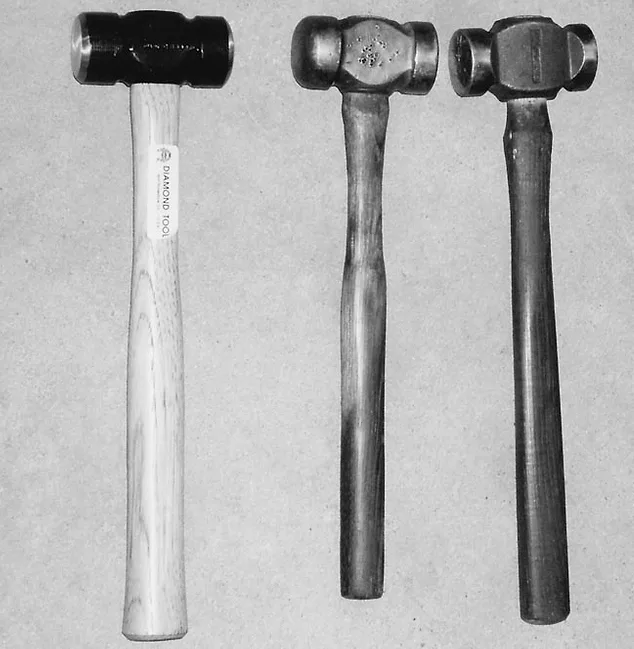American Farriers Journal
American Farriers Journal is the “hands-on” magazine for professional farriers, equine veterinarians and horse care product and service buyers.

HAMMER EVOLUTION. When Bob Schantz gets a new hammer, its handle is going to go through some changes. Schantz customizes the length and width of the hammer handle, scorches it and soaks it in linseed oil to improve the grip. At left is a new hammer, shown beside two that have already undergone the Schantz customizing treatment.
When Bob Schantz buys a new hammer, he doesn’t just head for the shop and start pounding away. The owner of the Spanish Lake Blacksmith Shop in Foristell, Mo., brings home his new tool and begins shaping the handle to his hand. He also works on the hammerhead and the neck of the handle to suit his grip and work.
To find the precise length that suits him best, Schantz fits the length of the hammer to his arm. He places the hammerhead on his arm at the elbow and, with his arm bent at a 90-degree angle, marks the handle between his first and second knuckles. He cuts the handle to that mark. This length suits him and seems to give him the best combination of power and control.
A farrier who buys a new hammer and doesn’t attempt to shape the handle is just asking for pain in his or her hand and less hammer control while working.
Schantz first uses a belt grinder to grind the handle down to fit his hand. At the same time, the grinding removes…